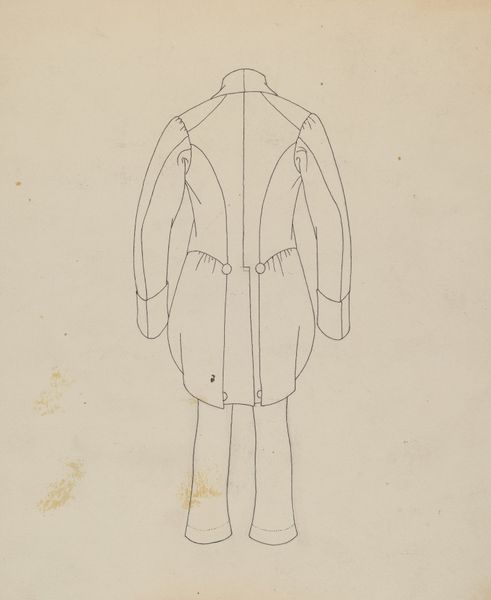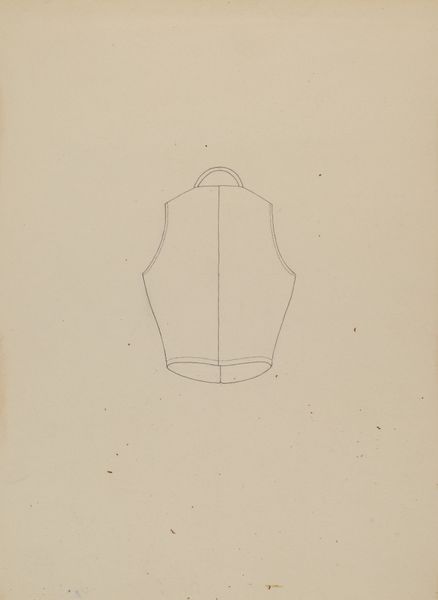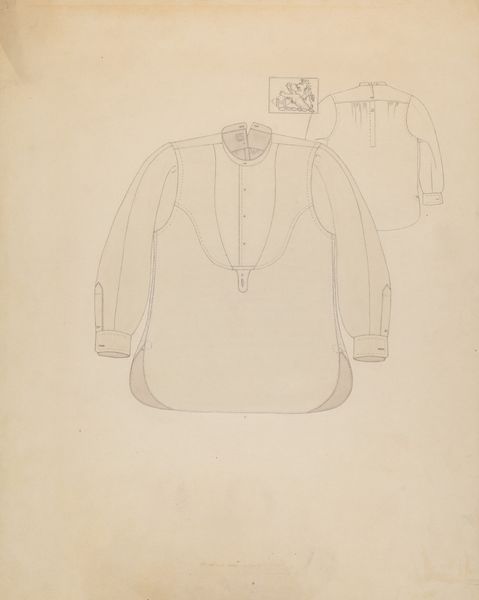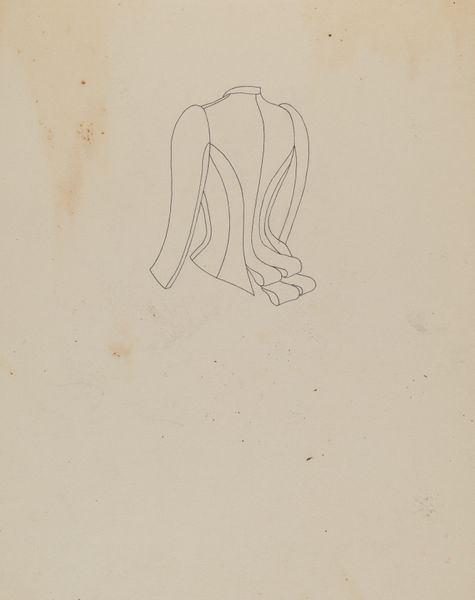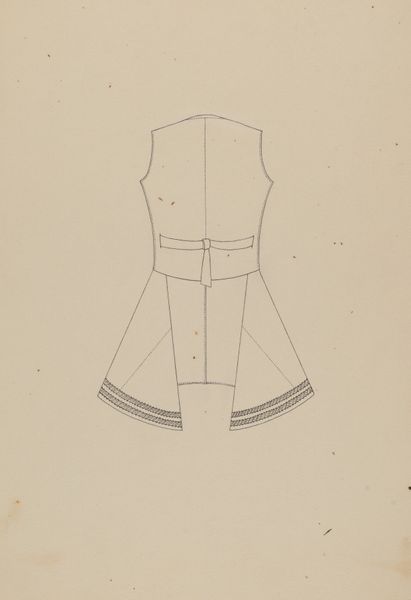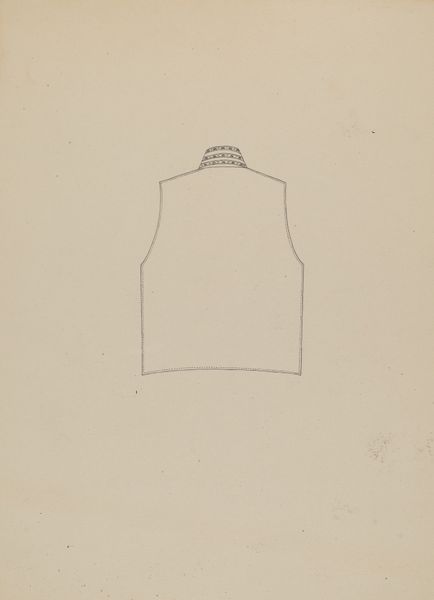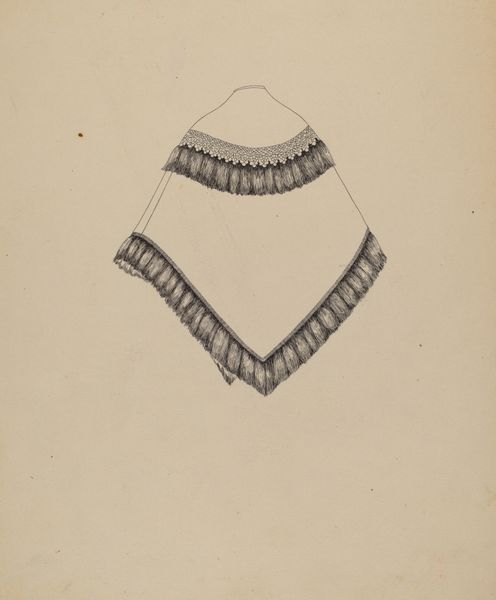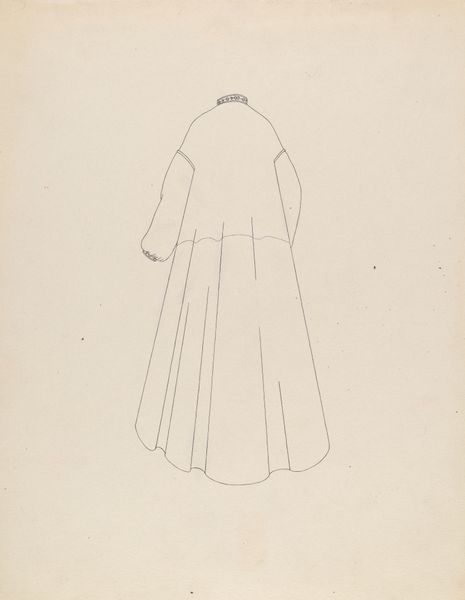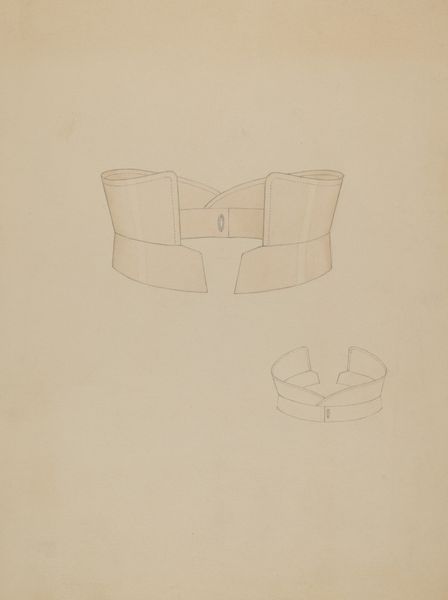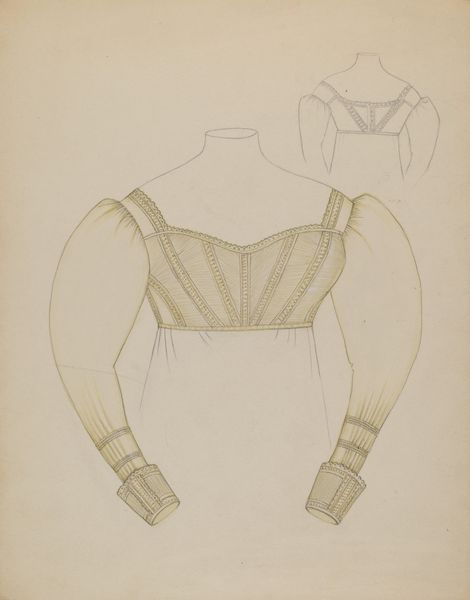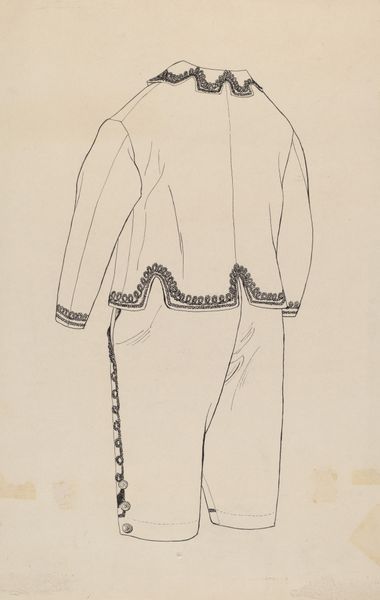
drawing, pencil
#
drawing
#
amateur sketch
#
light pencil work
#
pencil sketch
#
sketched
#
incomplete sketchy
#
figuration
#
personal sketchbook
#
pencil
#
line
#
sketchbook drawing
#
fashion sketch
#
sketchbook art
#
initial sketch
Dimensions: overall: 28.9 x 22.4 cm (11 3/8 x 8 13/16 in.)
Copyright: National Gallery of Art: CC0 1.0
Curator: Mae A. Clarke created this intriguing drawing, “Tail Coat,” around 1937. It’s a pencil sketch, a fleeting glimpse of a garment. What springs to mind when you look at it? Editor: There’s a kind of quiet yearning to it, don’t you think? Like the ghost of elegance. But what a disembodied thing, this coat absent the figure it was intended for. A blueprint without the building. Curator: Indeed, its incompleteness speaks volumes about process and perhaps even the economic realities of its time. Pencil, being relatively inexpensive and easily accessible, would have been a practical medium for quickly capturing design ideas. Think about who would be wearing the coat, where it was being made, and what economic factors shaped its style and availability in the 1930s. Editor: Precisely. You immediately see that this wasn't born of leisurely creation; it screams practical efficiency, where every line is necessary, reflecting perhaps constraints of production or access. It speaks of craft stripped down, focusing primarily on utility. And, let's consider the status the tailcoat conveyed back then. The symbolism is embedded in those stark lines. Curator: Yes, consider its stark presentation – no embellishment, just pure form. The light pencil work allows us to glimpse the inner structure of the garment. Almost x-rayed; exposing not just how the tailcoat looked, but hinting at its method of construction. It dances on that border of clothing, fashion and art. Editor: It really challenges those traditional art boundaries! It emphasizes function and labor. I begin to imagine all the steps to producing one. Beyond the drawing, what does it tell us about how we value design and materiality, then and now? It makes you question what is truly "art" when something so utilitarian can evoke such consideration. Curator: And those very subtle smudges? I imagine Mae Clarke sketching with intense concentration; it gives it an atmosphere of focus. I find the sketch invites my mind to imagine the finished garment and also the wearer. The piece whispers secrets that invite the mind to create and project. Editor: You're right; those ghostly smudges and incomplete lines also reflect those unseen hands—tailors, textile workers. The labor is so integral, isn't it? This artwork's quiet force reminds me of those vital questions around craft, labor, and value within and far beyond traditional art history. Curator: A valuable insight. Thank you! Editor: Absolutely, and it's been a valuable discussion, opening a window to broader artistic understanding.
Comments
No comments
Be the first to comment and join the conversation on the ultimate creative platform.
